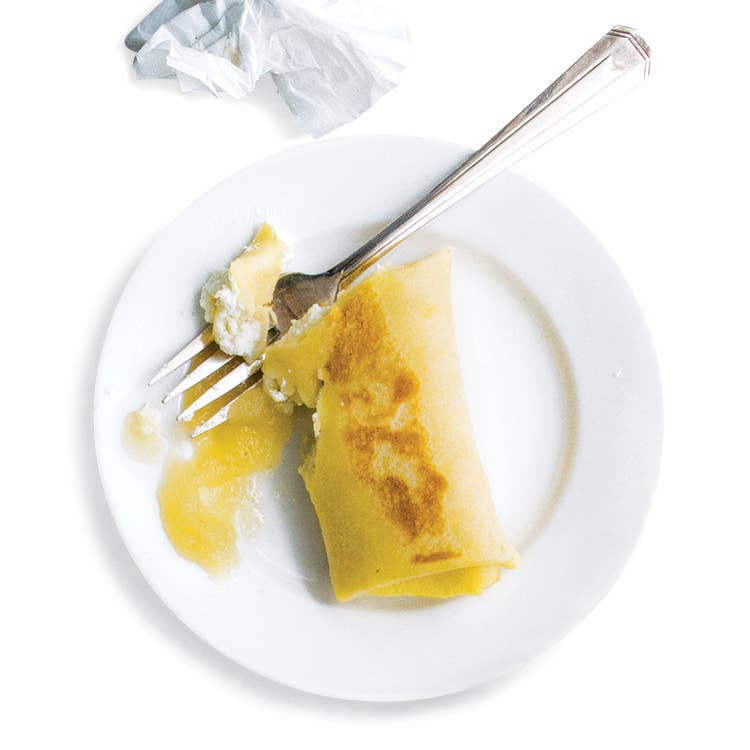
Blissful Blintz
In this traditional Jewish dish, delicate crêpes and sweet cheese filling are a match made in heaven
Four years ago, I found myself in Manhattan's diamond district, a midtown block of mostly Jewish wholesale jewelry dealers that's a busy Kasbah to the polished glamour of Tiffany's. I was looking for an engagement ring for my girlfriend, Lauren, and when I had trouble deciding on a ring at one of the stalls, the dealer shooed me away.
“Go next door to the Diamond Dairy,” he very strongly suggested. “Have the blintzes. Come back when you make a decision.”
I found the narrow kosher diner perched on a catwalk above the rear of one of the diamond malls, like the flying bridge of a container ship. While researching a book on Jewish delicatessens, I had eaten dozens of blintzes, thin pancakes wrapped around a sweet or savory filling. Some were scented with Mexican vanilla beans, others filled with fresh fruit, mushrooms, or even smoked fish. Would the Diamond Dairy's measure up to the best of them?
About fifty blocks south of the diamond district is the Lower East Side, the neighborhood where blintzes became popular in America. Jewish immigrants brought them to American teahouses in the late 19th century, but they'd been a staple in Eastern Europe for more than 2,000 years; early on, the round pancakes were eaten at the end of each winter in pagan celebrations, their shape a symbol of the returning sun. They evolved to take on many forms in Europe, from the Russian buckwheat blinchiki_to the Hungarian _palacsinta, both of which I'd encountered during my deli research.
Made with a batter similar to that of crêpes, blintzes have a larger proportion of eggs, which makes them sturdier. After being cooked into thin golden disks, they are filled most commonly with a combination of farmers' and cream cheese, then lightly crisped in oil. Throughout the ages they've remained a seminal Jewish comfort food. During Shavuot, the holiday that celebrates God giving Moses the Torah, my mother, who otherwise didn't cook, used to cover frozen blintzes with beaten eggs and orange juice and bake them until they puffed into a soufflé. The theory goes that they're the edible incarnation of the phrase “milk and honey,” representing sweet nourishment of the soul.
When my blintzes arrived at the Diamond Dairy, they didn't disappoint: Airy dough enfolded fluffy, slightly sweet cheese. Simple and unadorned, these were blintzes at their most elemental, and every forkful filled me with equal parts calm and courage. I polished off the plate, and as I headed back, a different jewelry display caught my eye. Amid a vast array of five-figure diamonds was a simple vintage ring with a single diamond set in gold. At once, the decision was perfectly clear.
Now, four years into our marriage, Lauren and I prep blintzes many mornings as our newborn sleeps nearby. The cozy days call out for warming breakfasts, something more special than run-of-the-mill pancakes.
I fry rounds of batter while Lauren combines the cheeses with egg yolks, sugar, and lemon zest. After filling and rolling our blintzes, I brown each in a skillet and portion them onto plates. We dig in when they are still piping hot. Crisp skin gives way to a creamy center, rich but zippy with zest. One bite takes me right back to that counter at the Diamond Dairy. Though the half-century-old establishment closed just six months after that fateful meal, I find comfort knowing that its legacy lives on as an emblem of love on my wife's ring finger.
Keep Reading
Continue to Next Story










